Welcome to the world of zebra coloring pages, where black & white stripes can come to life with vibrant hues and artistic flair! Zebras, with their unique and eye-catching patterns, have long fascinated both kids and adults alike. Whether you’re a parent looking for a fun and educational activity for your little ones or an artist seeking inspiration, these zebra coloring designs are sure to captivate and inspire your imagination.
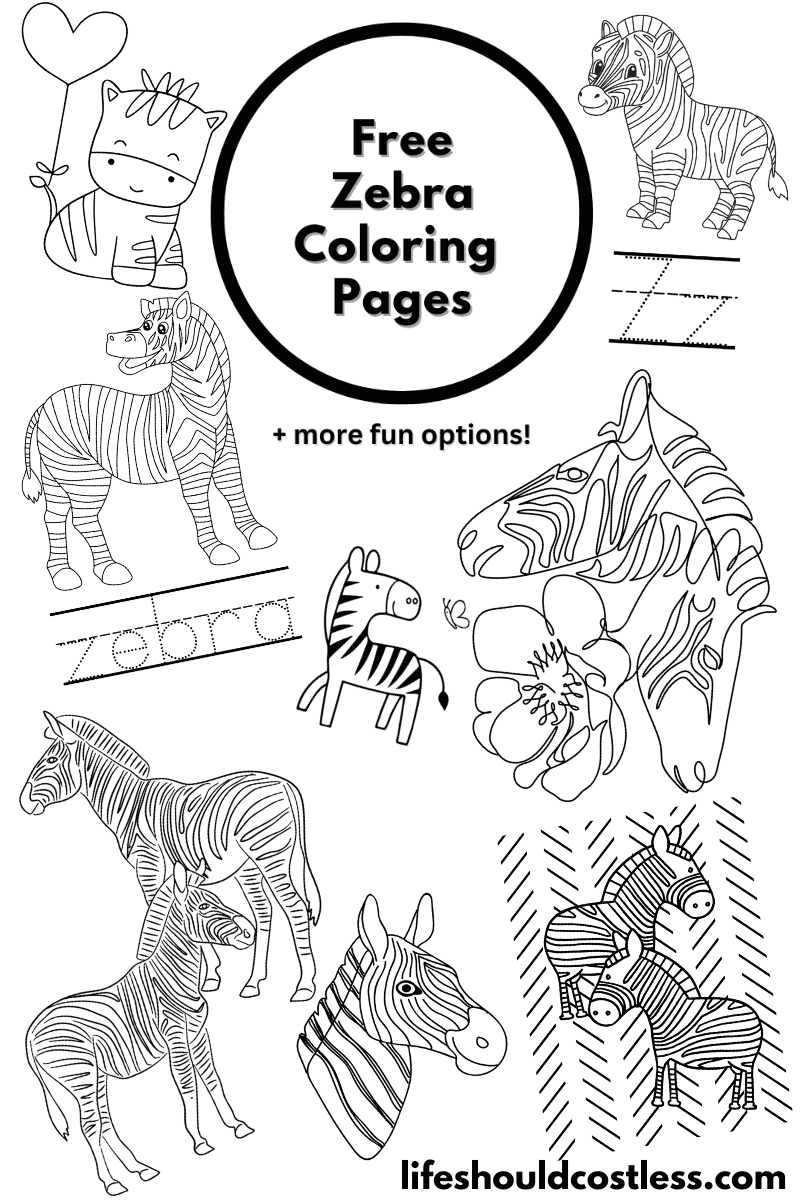
So, grab your colored pencils, markers, or crayons, and let’s embark on a colorful journey with these enchanting zebra illustrations!
Feel free to choose any design you prefer, then download the free PDF template, print it, and enjoy coloring to your heart’s desire.
Alternatively, you can also use these designs as embroidery patterns or find inspiration for fine line tattoos.
Zebra facts
For those who are new to my coloring pages, it’s worth mentioning that I enjoy providing the opportunity to learn about the subject, allowing you to seamlessly turn the coloring experience into an educational lesson. So, let’s get started on this enriching journey!
Here are lots of fun and interesting, simplified, facts about zebras (my reference source can be found here):
- Striking Black and White Coats: Zebras have distinctive black and white striped coats that serve as effective camouflage in their habitats.
- African Native: Zebras are native to the African continent and can be found in various countries, including Kenya, Tanzania, South Africa, and Botswana.
- Social Animals: Zebras are highly social and often found in herds called “harems,” consisting of one male (stallion), several females, and their young offspring.
- Zebra Species: There are three main species of zebras: Plains zebra, Grevy’s zebra, and Mountain zebra, each with unique characteristics and habitats.
- Grevy’s Zebra – Largest Zebra: Grevy’s zebra is the largest species, primarily found in northern Kenya and Ethiopia.
- Plains Zebra – Most Common: The Plains zebra is the most widespread and numerous species, seen in large herds grazing peacefully.
- Mountain Zebra – Unique Stripes: Mountain zebras have a more distinct stripe pattern with vertical stripes on their neck and torso and horizontal stripes on their legs.
- Equine Relatives: Zebras belong to the same genus as horses and donkeys but have their own distinct characteristics.
- Different Sounds: Zebras communicate using various vocalizations, such as barks, brays, and snorts, to convey warnings and maintain social bonds.
- Herbivorous Diet: Zebras are strict herbivores, feeding on grasses, leaves, bark, and shrubs.
- Adaptations for Survival: Zebras have excellent eyesight and hearing to detect predators and various survival adaptations.
- Mutualism with Wildebeests: Zebras often form symbiotic relationships with wildebeests, grazing together and benefiting from each other’s strengths.
- Powerful Kick: When threatened, zebras can deliver a swift and powerful kick with their hooves, a formidable defense against predators.
- Endangered Status: Grevy’s zebras are listed as Endangered on the IUCN Red List due to habitat loss and poaching.
- Zebra Crossings: The term “zebra crossing” for pedestrian crossings comes from the black and white stripes resembling a zebra’s coat pattern.
- Unique Individual Patterns: Each zebra has a unique stripe pattern, much like human fingerprints, helping them recognize each other.
- Migratory Behavior: Some zebra herds undertake long-distance migrations in search of food and water, covering hundreds of miles annually.
- Foal Camouflage: Zebra foals have a brownish coat with faint stripes at birth, providing better camouflage against predators.
- Predator Evasion Strategies: Zebras use various tactics to evade predators, such as running in zig-zag patterns or huddling close together to confuse attackers.
- Water-Dependent: Zebras require regular access to water sources, and their movements are influenced by water availability in their habitats.
These fascinating facts offer a glimpse into the world of zebras, showcasing their unique adaptations, social behaviors, and significance as iconic African animals.
If you would like to learn more about them, here are some other reputable resources to learn about zebras while coloring:
- https://kids.nationalgeographic.com/animals/mammals/facts/zebra
- https://kids.britannica.com/kids/article/zebra/353951
- https://www.pbslearningmedia.org/resource/nat14.earth.geol.tec.zebras/all-about-zebras/
- To see all of my free printables, go here.
- If you would like to see an alphabetized index of free printable coloring pages, go here!
- All of my animals coloring pages are found here.
- Or, my other mammals coloring pages can be found here.
Coloring tips
Creating unique and realistic pictures of zebras can be a rewarding artistic endeavor.
Here are some of my best tips and tricks to help you achieve stunning results:
- Reference Images: Use reference images of real zebras to study their distinctive stripe patterns, body proportions, and unique features. This will help you understand their anatomy and coloring better.
- Layering Colors: To achieve a more realistic look, use multiple layers of colored pencils or markers. Gradually build up the colors, blending and shading as you go to add depth and dimension.
- Study Lighting: Pay attention to the direction of light in your reference images. Understanding light and shadow is crucial for creating realistic-looking zebras. Shadows can enhance the three-dimensional appearance of your drawing.
- Experiment with Mediums: Try various art mediums such as colored pencils, markers, pastels, or watercolors to find the one that suits your style best. Each medium can yield different effects.
- Create Texture: Zebras have a unique texture to their coats. Experiment with different techniques to mimic the look of fur, such as using fine strokes or a stippling technique.
- Pay Attention to Stripes: Zebras have individual stripe patterns. Avoid making the stripes too uniform or regular; instead, vary the width and spacing to add realism.
- Observe Zebra Posture: Pay attention to the posture and body language of zebras in your reference images. This will help you depict them more accurately and convey a sense of movement or mood.
- Highlight the Eyes: The eyes are essential for capturing the lifelike essence of any animal. Make sure to add highlights and shading to make the eyes look realistic and expressive.
- Use Blending Tools: Blending tools like blending stumps, tortillons, or blending markers can help smooth out colors and create seamless transitions.
- Practice Patience: Creating a realistic zebra drawing takes time and patience. Don’t rush the process, and take breaks to avoid fatigue.
- Background Choice: Consider the background of your zebra drawing carefully. A simple or blurred background can help focus attention on the zebra itself. Or, a bright background could add pops of color for more visual appeal.
- Add Details: Pay attention to small details like hooves, ears, and facial features to make your zebra drawing more convincing.
- Study Zebra Behavior: Understanding how zebras behave can help you add natural poses and interactions in your artwork, enhancing the realism.
- Embrace Creativity: While striving for realism, don’t be afraid to add your artistic touch and creativity. You can experiment with surreal or stylized elements to create a unique and captivating artwork, or go as bright and colorful as you desire.
Remember, practice is key to improving your art skills.
Don’t be discouraged by initial attempts; keep trying and refining your techniques to achieve the level of realism and uniqueness you desire in your zebra drawings. Happy coloring!
Options For Printing:
Letter Z is for zebra writing practice worksheets
*My letter Z is for Zebra coloring sheet printables are specifically designed to be used in a classroom setting, they are the only printable options on this page that do not need written permission to use in a public setting.
Please send the link to this post along if anyone asks you where you got them. Thank you!
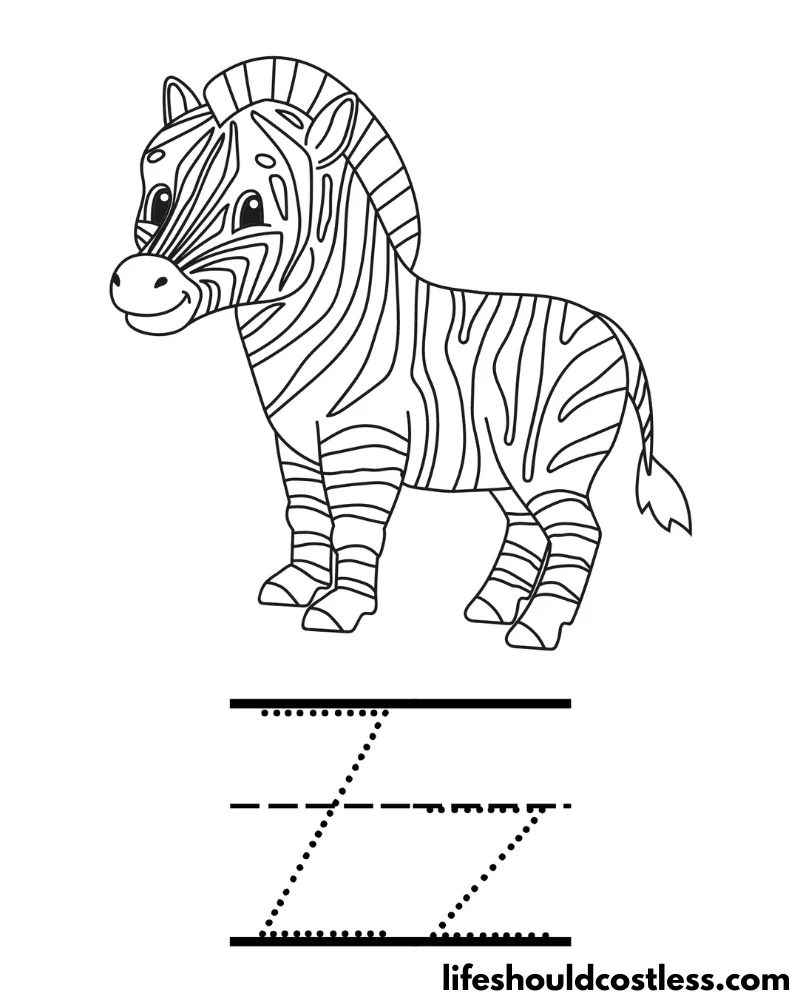
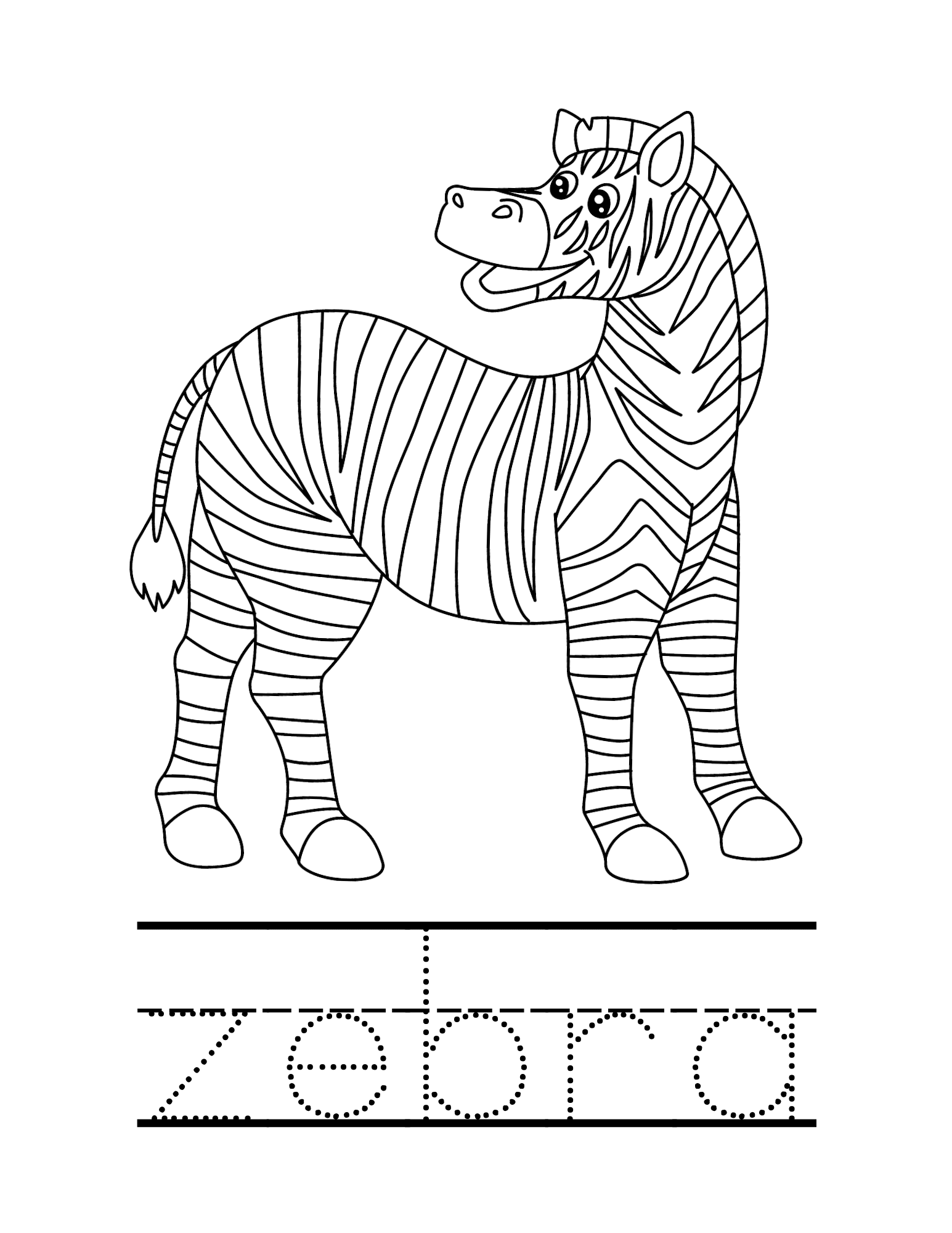
Various Zebra Designs
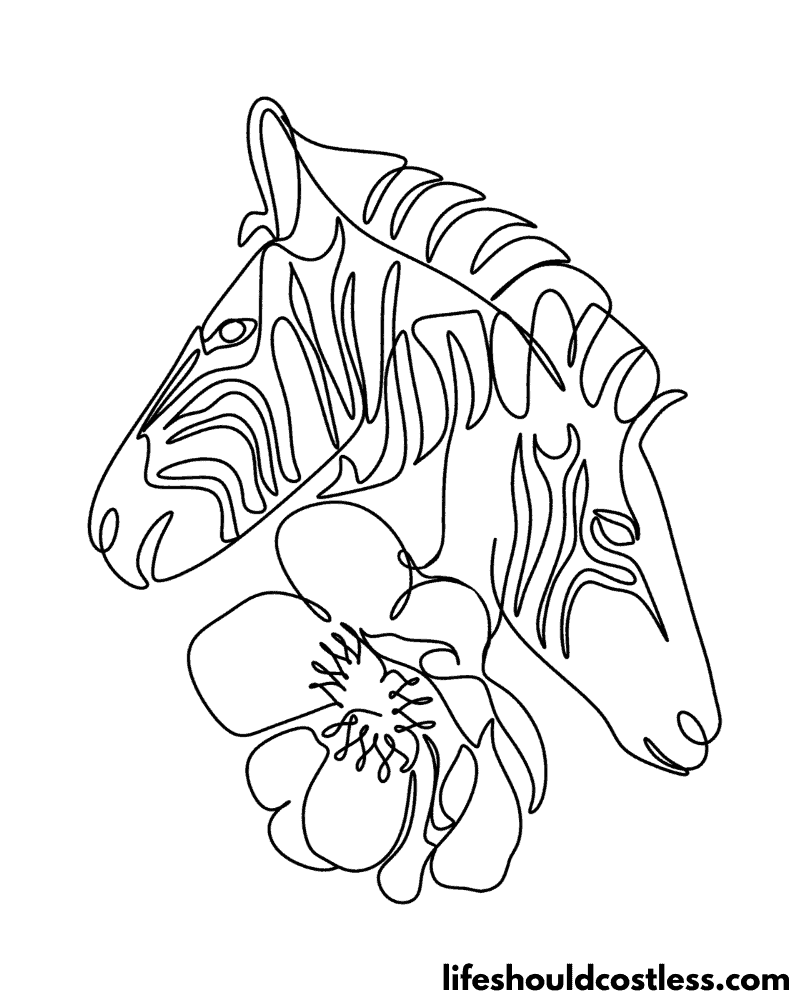
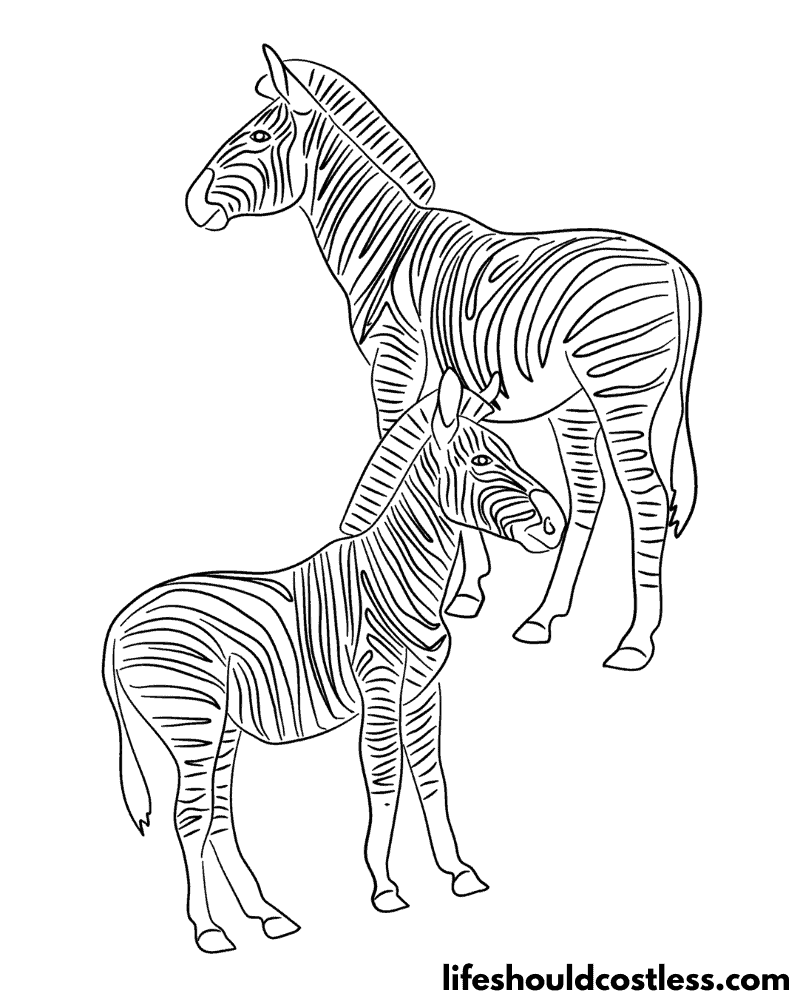
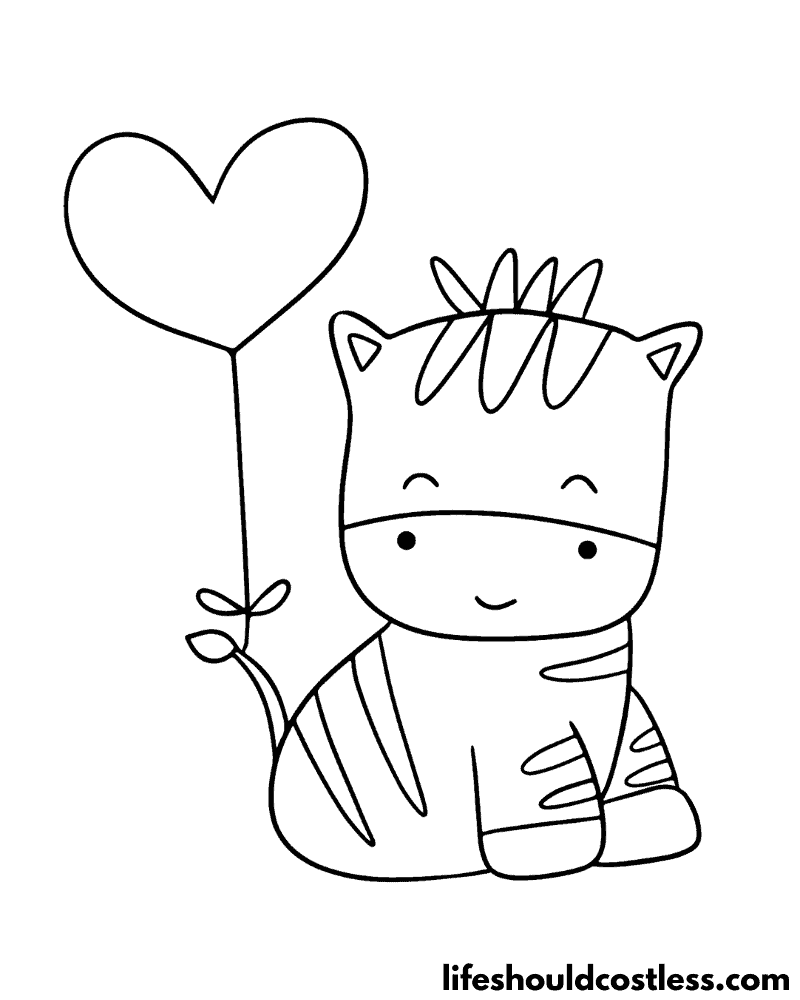
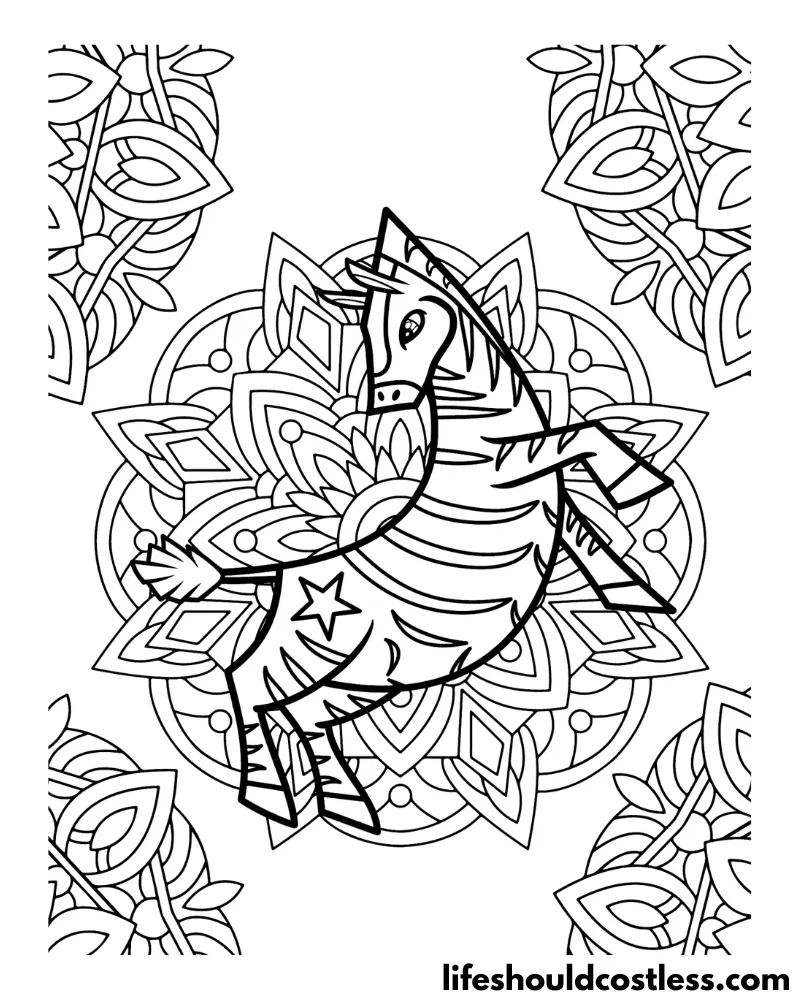
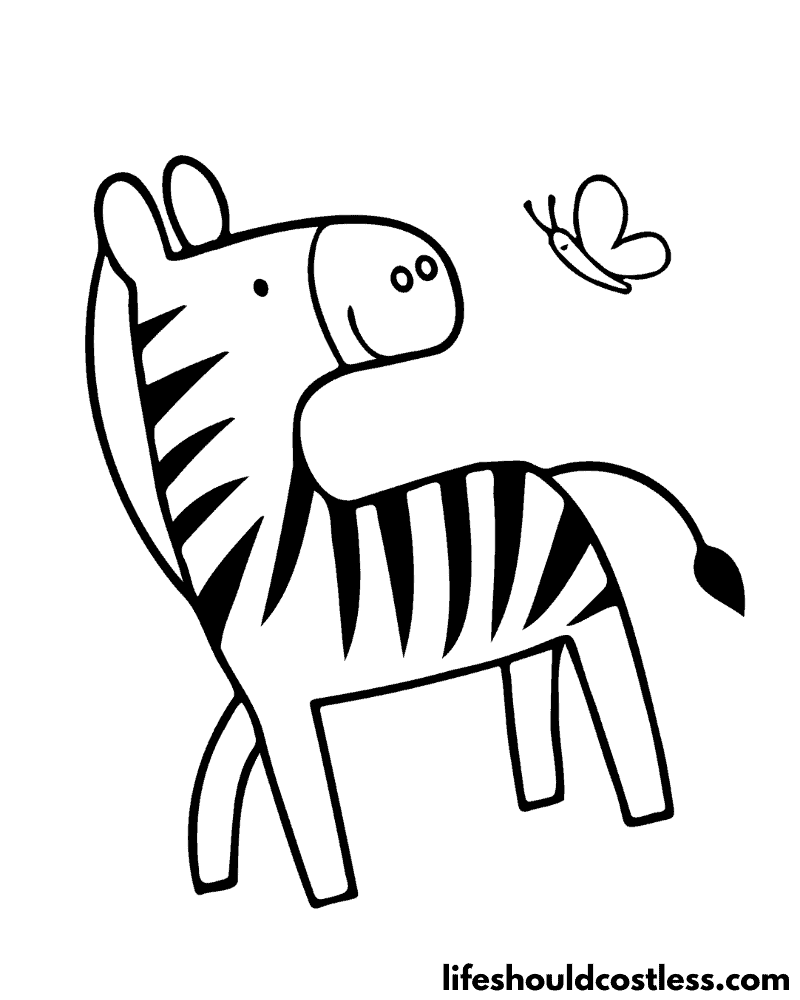
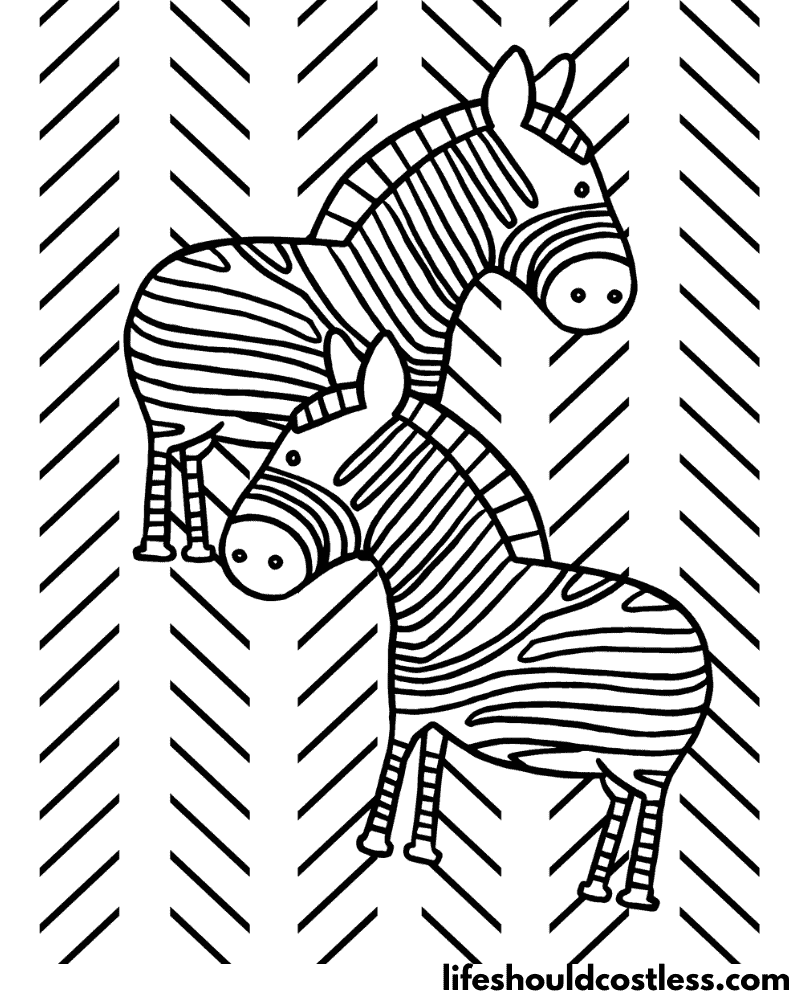
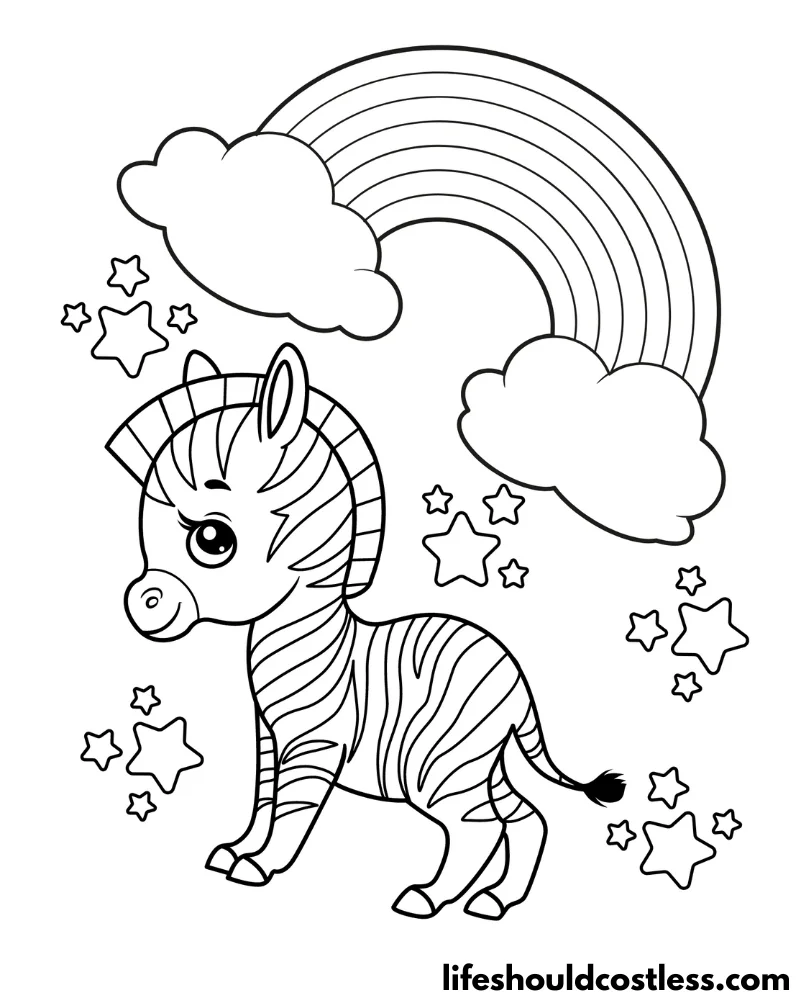
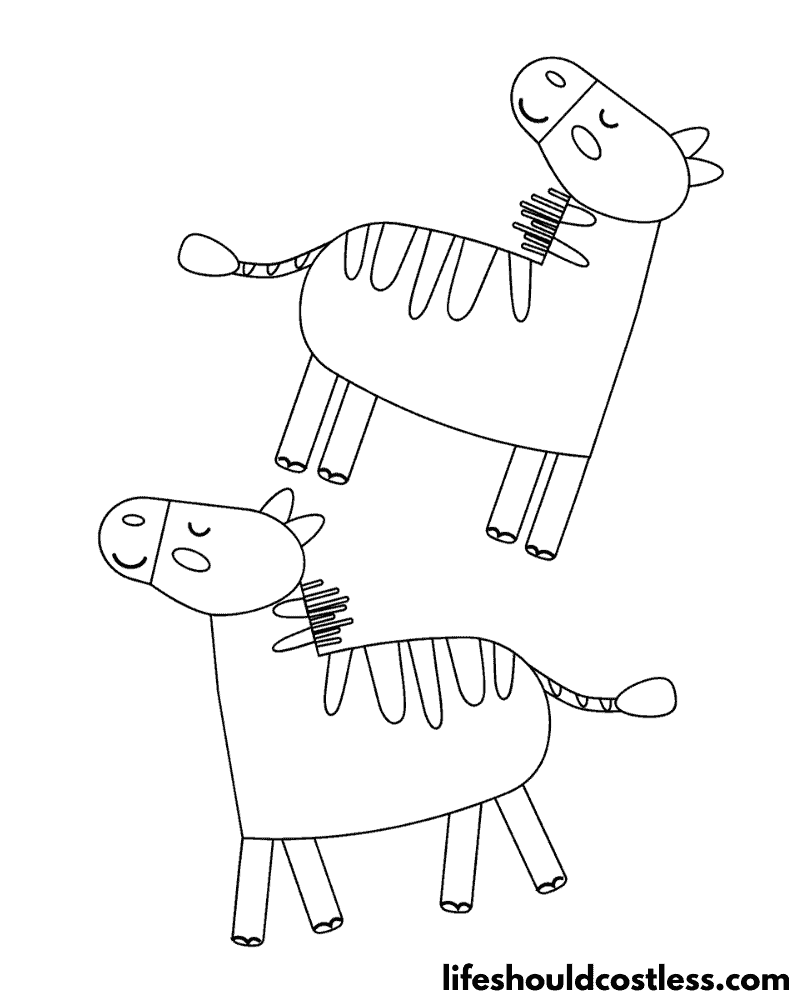
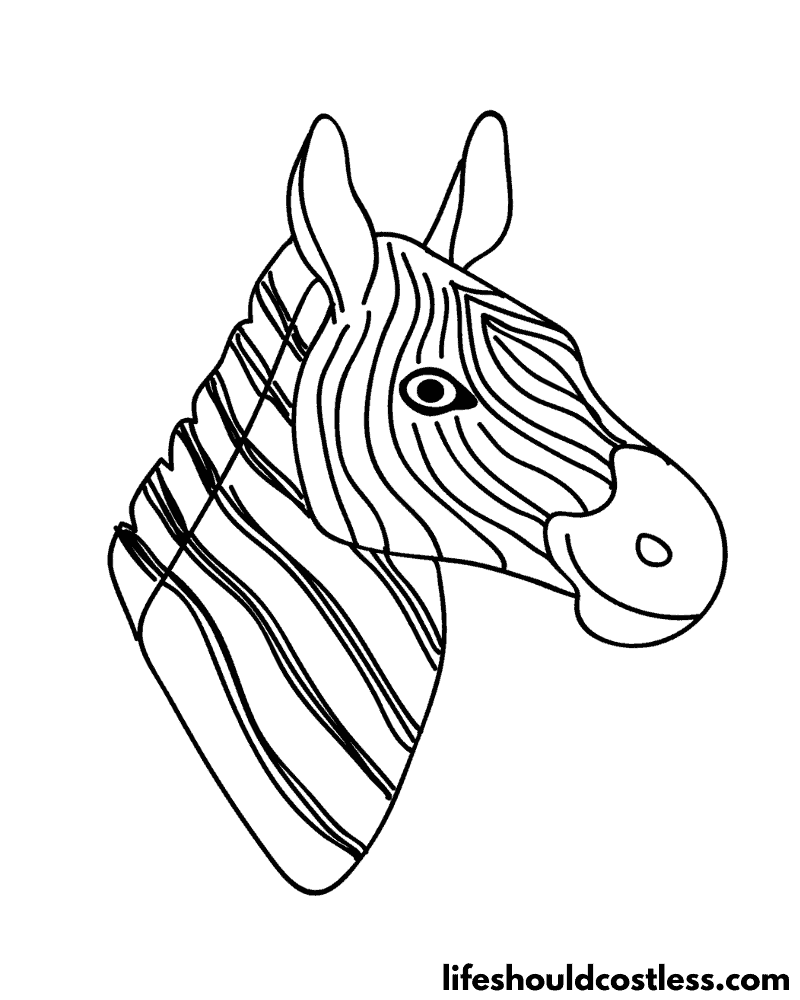
FAQ’s
The true color of a zebra is black with white stripes. Scientifically, zebras are considered to have black skin underneath their coat, and the white stripes are caused by a lack of pigmentation in the hair.
Each zebra species has a unique stripe pattern, but all zebras have black skin and white stripes.
There is an ongoing debate among biologists about why zebras have evolved to have such striking black and white striped coats.
Some theories suggest that the stripes may act as a form of camouflage, making it difficult for predators like lions and hyenas to single out individual zebras in a herd.
Other theories propose that the stripes may help regulate body temperature, repel biting flies, or serve as a means of social communication within the herd.
In any case, the black and white stripes make zebras one of the most recognizable and iconic animals in the animal kingdom.
Zebras are born with a coat color that is primarily brown or reddish-brown, and they have faint stripes at birth.
As they grow older, their coats gradually darken, and the distinctive black and white stripes become more pronounced. The exact pattern and intensity of the stripes may vary depending on the zebra species.
Over time, the brown or reddish-brown coat color is replaced by the black and white coloration that we commonly associate with zebras. T
his color transformation occurs during the first few months of a zebra’s life. The exact timing and intensity of the change may differ between individual zebras, but by the time they reach adulthood, they will have the familiar black and white striped appearance.
*I will add more zebra colour / color questions and answers as the questions get sent to me.
Conclusion
In conclusion, zebra coloring pages offer a wonderful opportunity to explore the captivating world of these magnificent creatures while engaging in a creative and educational activity.
Through the strokes of our colored pencils, markers, or watercolors, we have delved into the unique realm of zebras, understanding their distinctive stripe patterns, social behaviors, and their significance in the African landscape.
By using reference images and studying their natural characteristics, we were able to breathe life into our artworks, crafting detailed and realistic representations of these graceful animals.
Throughout this artistic journey, we discovered the versatility of different art mediums and techniques, each adding its own flair and depth to our zebra creations.
From the majestic Grevy’s zebra with its tall stature to the sociable Plains zebra found in vast herds, we have explored the diversity of zebra species, each with its own charm and allure.
Emulating their fur textures, honing our shading skills, and carefully capturing the glimmer in their eyes allowed us to portray the true essence of these animals on paper.
Beyond just coloring, we came to appreciate the ecological importance of zebras in their natural habitats.
From being a vital part of the savannas’ delicate ecosystem to forming unique relationships with other African animals, zebras showcase the interconnectedness of life in the wild.
By learning about their migratory behaviors, social structures, and adaptation to their environments, we were drawn into a deeper appreciation for the wildlife that graces our planet.
As we conclude our zebra coloring adventure, let us carry the spirit of exploration and creativity into other aspects of our lives.
Just as each zebra has its unique stripe pattern, each one of us possesses our individual artistic style.
Let us cherish the diversity within us and celebrate the beauty that emerges when we express ourselves through art.
Happy coloring, and may our love for zebras continue to inspire us to protect and cherish the incredible diversity of life on our planet.
Thanks so much for stopping by my blog and supporting my endeavors to make people’s lives a little easier/better/more affordable.
If you liked this post, or found it helpful in any way, please make sure to share it with your family, friends, and co-workers via social media.
Or you could even send them the direct link via email. Whichever way you choose to spread the love, I super appreciate it! ~Sarah
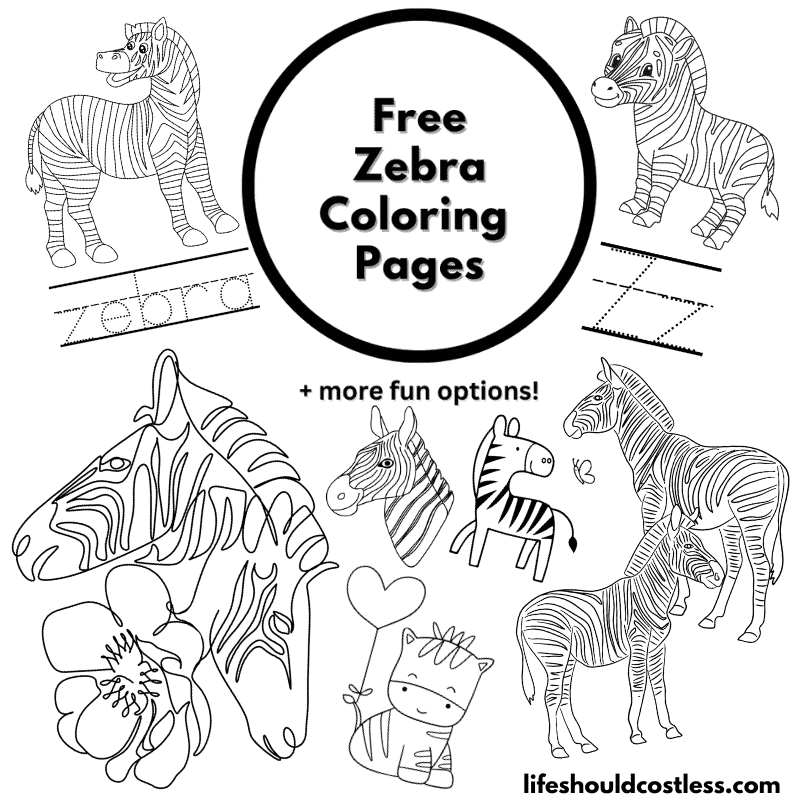
How To Follow & Support This Site
- If you would like to subscribe to my email list, go here.
- Make sure to follow along via social media, by going here.
- If you would like to learn how to really show your support to this site (at no cost to you), go here.
- If you would like to make a direct donation to the site, go here.
Check out my other free printables
- To see all of my free printables, go here.
- If you would like to see an alphabetized index of free printable coloring pages, go here!
- All of my animals coloring pages are found here.
- Or, my other mammals coloring pages can be found here.
Otherwise, here are direct links to several of my other related posts that you’re also going to love:
Animals / Mammals
Animals / Birds
Animals / Insects
Other good resources for a printable zebra
- https://clipart-library.com/zebra-pictures-to-color.html
- https://www.coloring.ws/zebra.htm
- https://www.dreamstime.com/illustration/zebra-coloring.html
*This post was originally shared to this blog on 08/04/2023, and has since been updated to improve user experience, add video instruction, add more coloring page options, as well as to make it as shareable as possible across the social medias.
**Please note that I do try my hardest to provide factual, but easy to understand, information about each topic. If you notice a discrepancy in my coloring pages, facts, or see something that you deem “misinformation/incorrect” please make sure to notify me about it. I would prefer that you send me an email with a link to a more reputable resource on that subject, so that I can correct it as soon as possible. Thanks so much for helping this site become the best that it can be!
***Resources from djinkers were used in the production of this article.
